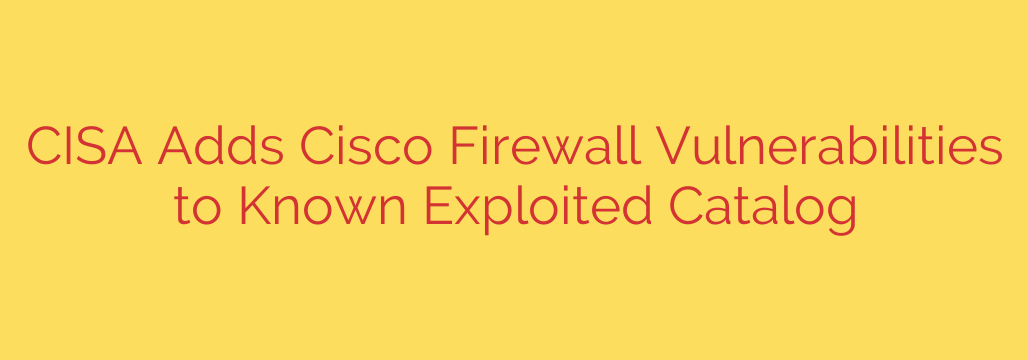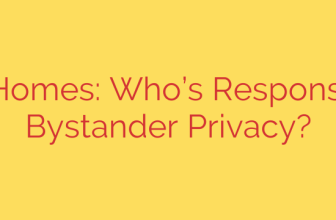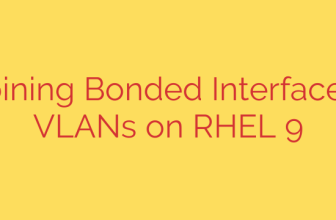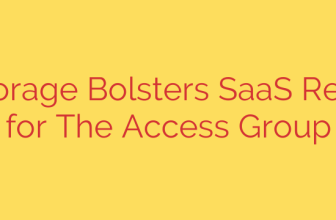
Urgent Patch Required: CISA Confirms Active Exploitation of Critical Cisco Firewall Vulnerabilities
A critical security directive has been issued, signaling an immediate threat to networks protected by widely-used Cisco security appliances. The U.S. Cybersecurity and Infrastructure Security Agency (CISA) has officially added three significant vulnerabilities affecting Cisco firewalls to its Known Exploited Vulnerabilities (KEV) catalog, confirming they are under active attack by malicious actors.
This action serves as a crucial alert for all organizations, not just federal agencies. When a vulnerability is added to the KEV catalog, it means there is reliable evidence of active exploitation in the wild. Security teams and network administrators must treat this as a top-priority threat that requires immediate attention to prevent a potential breach.
Understanding the Critical Flaws
The vulnerabilities impact Cisco Adaptive Security Appliance (ASA) and Cisco Firepower Threat Defense (FTD) software, two of the most common enterprise-grade firewall solutions on the market. Attackers who successfully exploit these flaws can gain deep control over a network’s security perimeter, allowing them to bypass security, execute arbitrary code, and potentially move laterally across the internal network.
The three vulnerabilities now confirmed as actively exploited are:
- CVE-2024-20353: A critical remote code execution (RCE) and denial-of-service (DoS) flaw. This is the most severe of the three, as it could allow an unauthenticated, remote attacker to execute malicious code on the device, effectively taking it over completely.
- CVE-2024-20359: A persistent local code execution vulnerability. While it requires some level of initial access, an attacker could use this flaw to run commands with root-level privileges, giving them persistent and elevated control over the firewall.
- CVE-2024-20358: A cross-site request forgery (CSRF) vulnerability. This flaw could be used to trick an authenticated administrator into performing unintended actions, such as changing security configurations or creating new user accounts, without their knowledge.
These vulnerabilities are not theoretical risks; they are being actively used in real-world attacks. Threat intelligence has linked the exploitation of these flaws to sophisticated state-sponsored threat actors, highlighting the serious and targeted nature of the campaign.
Why This CISA Directive Matters
CISA’s KEV catalog is more than just a list; it is an actionable directive for Federal Civilian Executive Branch (FCEB) agencies. Under Binding Operational Directive (BOD) 22-01, these agencies are required to remediate identified vulnerabilities by a specific deadline to protect federal networks.
While this mandate applies directly to government agencies, the private sector is strongly urged to follow suit. CISA’s guidance serves as an authoritative benchmark for cybersecurity best practices. If a vulnerability is deemed urgent enough for a federal mandate, it represents a clear and present danger to any organization using the affected technology.
Protect Your Network Now: Actionable Security Steps
To defend against these active threats, immediate action is necessary. A failure to patch these vulnerabilities leaves your network’s primary defense layer exposed to compromise. Follow these steps to secure your infrastructure:
- Identify All Affected Devices: Conduct a thorough inventory of your network to identify all instances of Cisco ASA and FTD software. Ensure you have a complete picture of your potential exposure.
- Apply Security Patches Immediately: This is the most critical step. Cisco has released security updates to address all three vulnerabilities. Prioritize the deployment of these patches across all affected firewalls without delay. Do not assume your devices are not a target.
- Hunt for Signs of Compromise: Since these flaws are being actively exploited, it is essential to investigate for any evidence of a past or ongoing breach. Review system logs, firewall configurations, and network traffic for any unusual activity, unauthorized user accounts, or unexplained configuration changes.
- Restrict Management Interface Access: As a best practice, ensure the management interfaces for your Cisco ASA and FTD devices are not exposed to the public internet. If remote management is necessary, restrict access to a trusted list of IP addresses using strict access control lists (ACLs).
In today’s threat landscape, proactive defense is paramount. The confirmation of active exploitation by CISA underscores the urgency of the situation. By taking decisive action now, you can close a dangerous entry point for attackers and significantly strengthen your organization’s security posture.
Source: https://securityaffairs.com/182593/hacking/u-s-cisa-adds-cisco-secure-firewall-asa-and-secure-ftd-flaws-to-its-known-exploited-vulnerabilities-catalog.html








